Learn how to make the perfect cup of Matcha Latte in a few simple steps! This tastes much better than anything you can get at the coffee shop.
You will love the creamy matcha latte combining high-quality matcha, your choice of milk, and optional sweetener and flavoring. This customizable beverage offers a delightful blend of energy and relaxation in every sip!
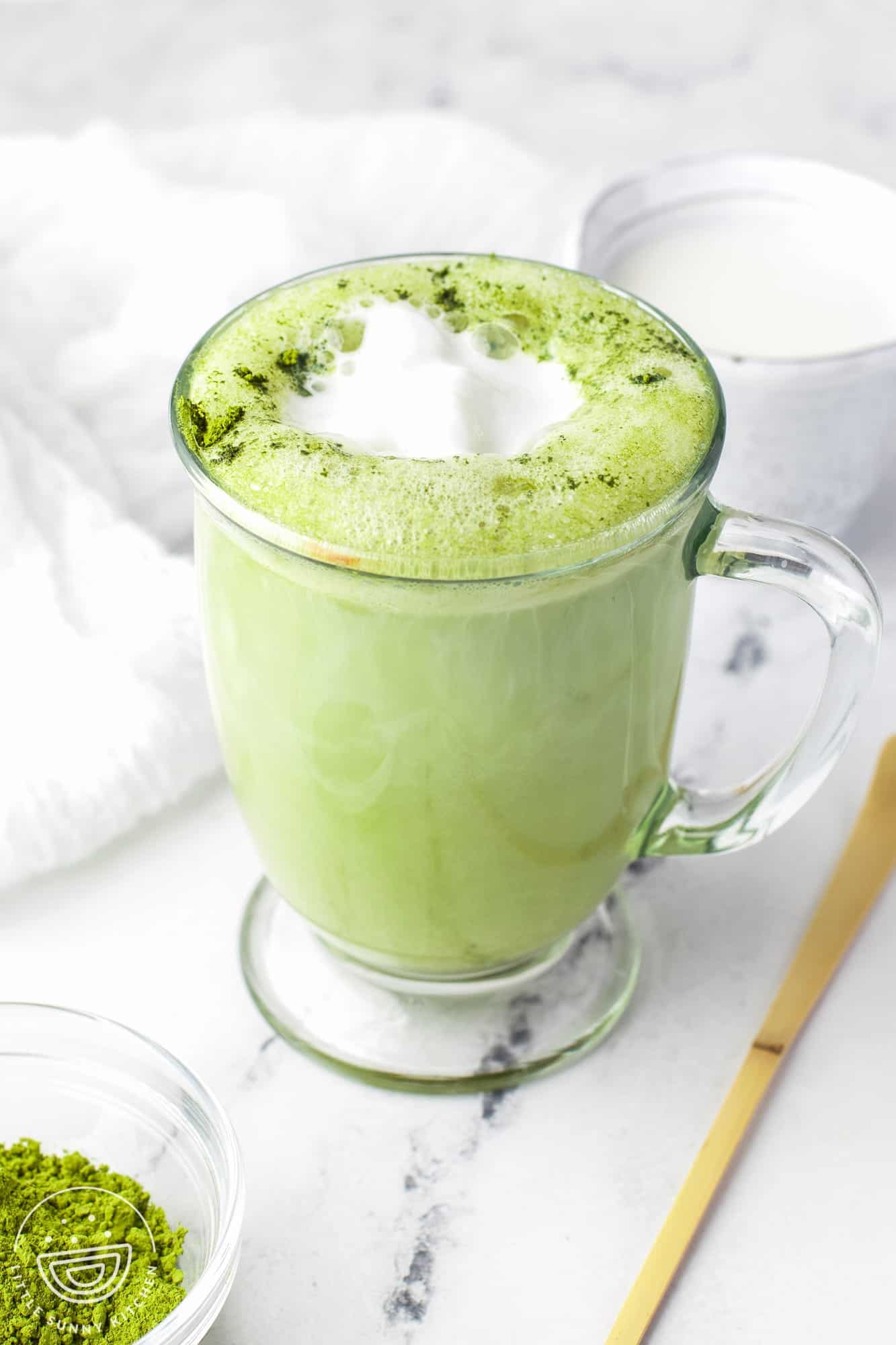
What is Matcha?
Matcha is a tea that is ground into a fine powder and made from green tea leaves that are grown in the shade for 3-4 weeks before harvesting. The plant’s name is Camellia Sinensis and it’s a type of green tea. Unlike other green teas, matcha involves consuming the entire tea leaf in powdered form, rather than steeping the leaves and discarding them as you would do with regular tea.
Taste: If you’re wondering what matcha tastes like, it is slightly bitter and grassy with an earthy flavor with some natural sweetness.
Harvesting and processing matcha green tea is labor-intensive, and starting from sharing the plants and growing them in the shade increases the amounts of chlorophyll in the leaves, and results in vibrant green-colored leaves with high concentrations of nutrients.
After the tea leaves are harvested, they are steamed and air-dried, destemmed, and stone ground into a fine powder. That is what we call “matcha”.
Matcha is deep-rooted in the Japanese culture, and plays a big role in the traditional tea ceremonies. It became popular in the Western world after learning about matcha’s health benefits, and its unique properties and vibrant color. Matcha is now used to make lattes and smoothies, and mixed in with juices. It is also used in baking and cooking.
Why You’ll Love This Homemade Matcha Latte
- Simple Straight Forward Recipe: If you want to learn how to make the perfect cup of matcha latte at home, you’ve come to the right place!
- Control the Quality: By preparing your matcha latte at home instead of buying one, you can choose the quality of the ingredients, including matcha powder, milk, and sweeteners. This allows you to select higher-grade matcha and preferred milk alternatives for a healthier and more personalized drink. Having said that, I still like to order a matcha latte from time to time at a cafe!
- Cheaper: Buying coffee and lattes at cafes can be very expensive! Sure, I like to do it every once in a while when I want to sit at a cafe, but making coffee and matcha lattes at home saves me a lot of money.
- It’s Fun! Making your own matcha latte can be a fun and rewarding experience. As you practice and improve your technique, you may find a sense of accomplishment and satisfaction in creating a delicious drink just the way you like it.
Ingredients and Tools Needed
Here’s what you need to make a homemade matcha latte:
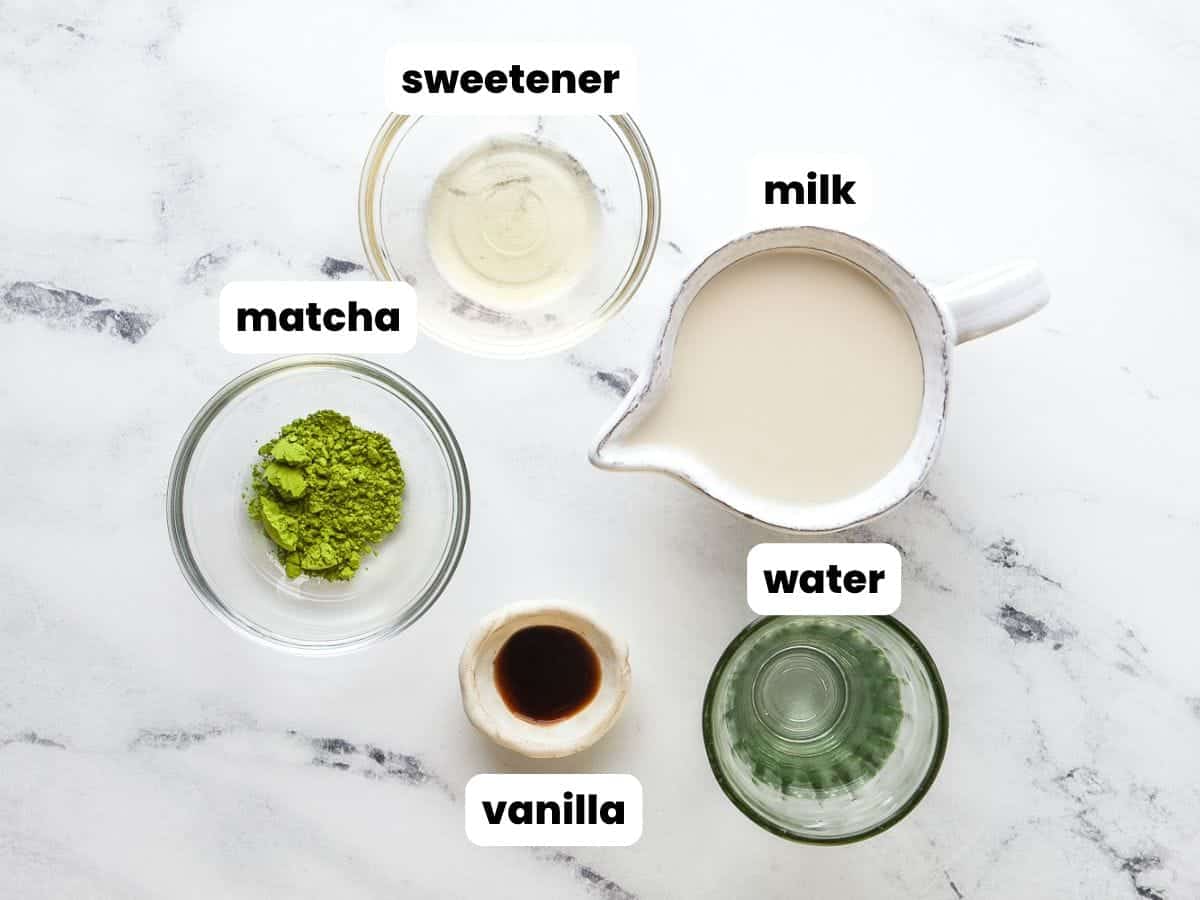
Ingredients
- Matcha powder: Choose a good-quality, preferably ceremonial-grade matcha powder for the best flavor and color. Keep on reading for more information on how to buy the best-tasting matcha powder!
- Water: You will need hot water to mix the matcha and create a smooth paste. The water temperature should be around 160-175°F (70-80°C) to avoid scalding the matcha (it can become bitter).
- Milk: Choose your favorite milk for the latte, go for semi-skimmed (2%) milk, or non-dairy milk such as almond milk, soy milk, or oat milk, to create the creamy latte base.
- Sweetener (optional): You can sweeten up your drink if you like! Add a little bit of honey, maple syrup, or agave syrup.
- Flavorings: You can also add a dash of pure vanilla extract or a sprinkle of cinnamon to enhance the flavor of your matcha latte.
Tools
- A matcha whisk (chasen) which is a traditional matcha bamboo whisk with many delicate tines, or a small regular whisk to mix the matcha powder and hot water into a smooth paste.
- A small bowl or cup to mix the matcha paste.
- A milk frother to froth the milk. I sometimes use an electric milk frother to froth the milk, but a French press can also do the job really well if you have one!
- A cup or mug to serve your matcha latte.
Complete list of ingredients and amounts can be found in the recipe card below.
How to Buy High Quality Matcha
When choosing what matcha powder to buy, consider the following factors to buy the best quality matcha that you can find/afford:
- Origin: High-quality ceremonial matcha is primarily produced in Japan, specifically in the Uji region. Look for matcha sourced from this area to ensure authenticity and quality.
- Color: A vibrant green color is an indicator of good-quality matcha. Lower-quality matcha tends to have a dull or yellowish hue. The brighter the green, the fresher and higher quality the matcha is likely to be.
- Grade: Matcha comes in different grades, including ceremonial, premium, and culinary grades. Ceremonial grade is the best quality, it’s sweeter, hand-picked, the most expensive matcha, and it’s best for drinking. Premium grade is also suitable for making lattes. Culinary-grade matcha is often used in cooking and baking (I make these matcha crinkle cookies with it!) and it’s not recommended for drinking.
- Price: The highest the grade, the more expensive the matcha will be.
- Packaging: Look for matcha powder that is packed in airtight, opaque containers or resealable bags, as matcha is sensitive to light, air, and moisture. Proper packaging helps maintain freshness and flavor.
- Ingredients: Always read the ingredient list to make sure that the product only contains 100% pure matcha green tea powder without any added sugars, flavors, or artificial colors.
How To Make a matcha latte
- Prepare the matcha: Start by sifting 1-2 teaspoons of matcha powder into a large mug or a spouted bowl using a fine mesh strainer to ensure a lump-free consistency.
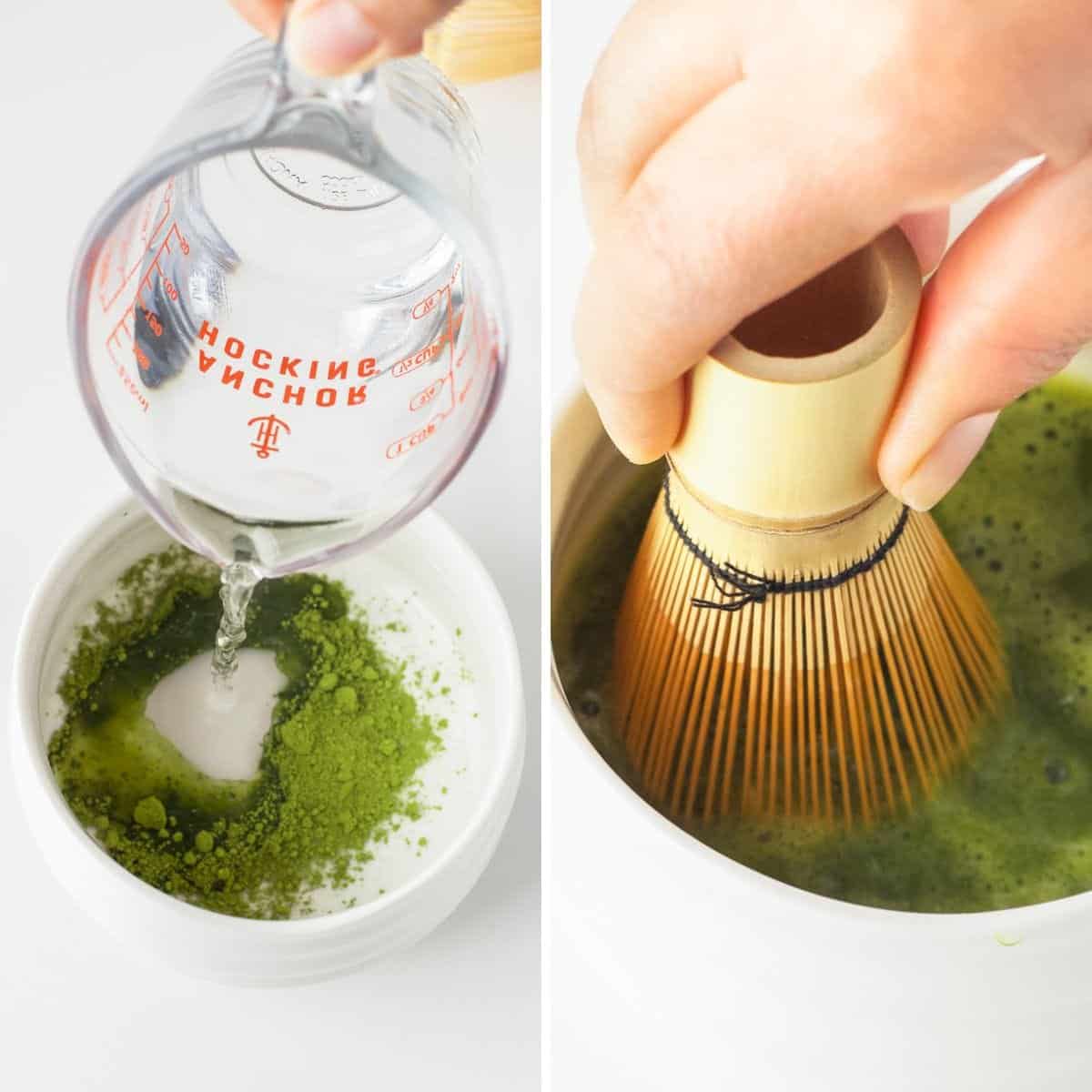
- Make the matcha paste: Pour 2-3 tablespoons of hot water (160-175°F or 70-80°C) over the sifted matcha. Using a matcha bamboo whisk (chasen) or a small regular whisk, mix the matcha and hot water in a gentle circular motion until smooth, thick paste forms, ensuring that no lumps remain.
- Whisk the matcha: Once the paste is smooth, whisk the matcha vigorously in an up-and-down motion for about 30 seconds, or until the mixture becomes frothy and the matcha is fully dissolved.
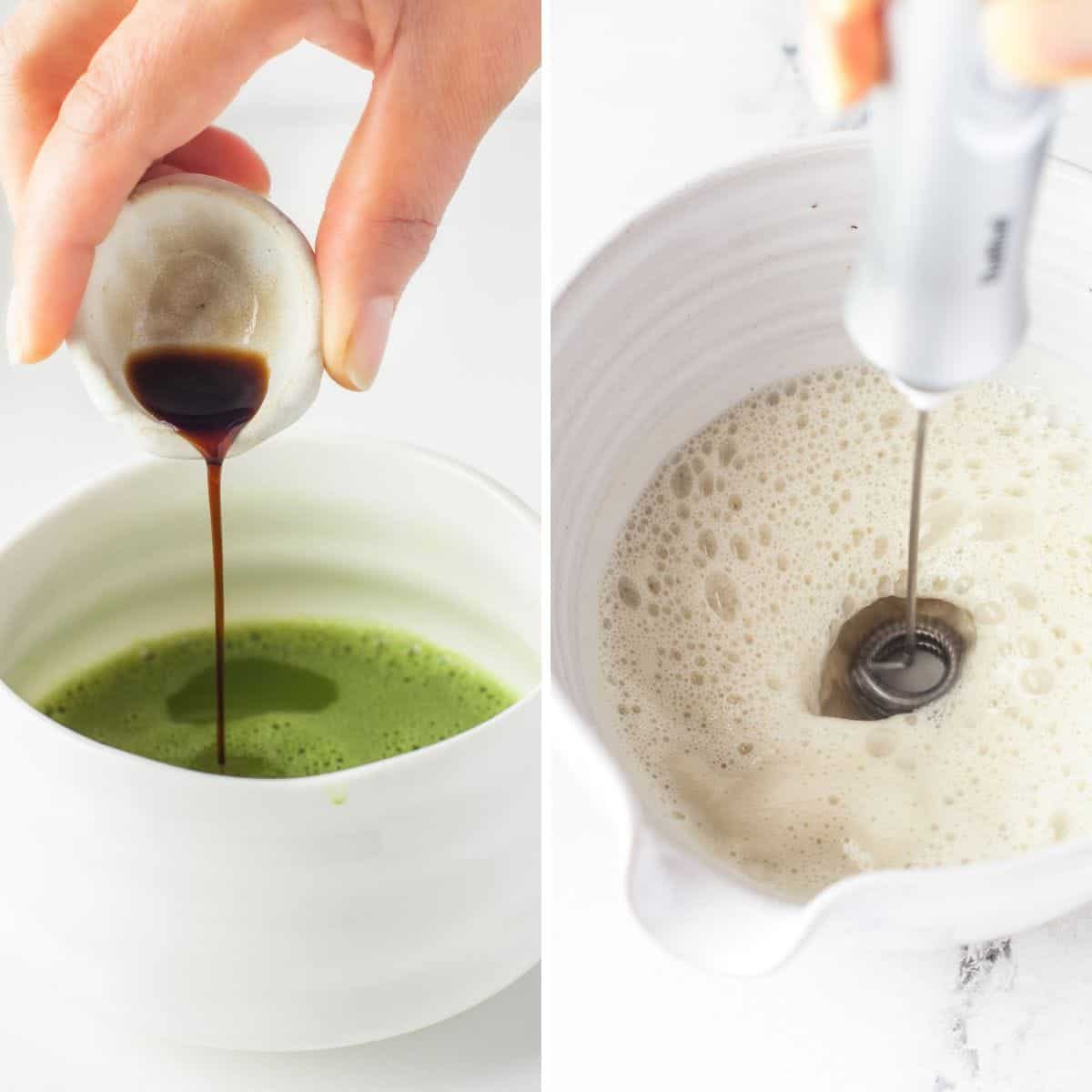
- Add flavor: To the frothy matcha mixture, add a dash of vanilla extract (optional) and your choice of sweetener if using. Stir gently to combine.
- Froth the milk: Heat the milk in a saucepan over low heat or in a microwave-safe container until it reaches your desired temperature. Be careful not to let the milk boil. Use a milk frother, a french press, or a small whisk to froth the milk until it has a creamy, foamy texture.
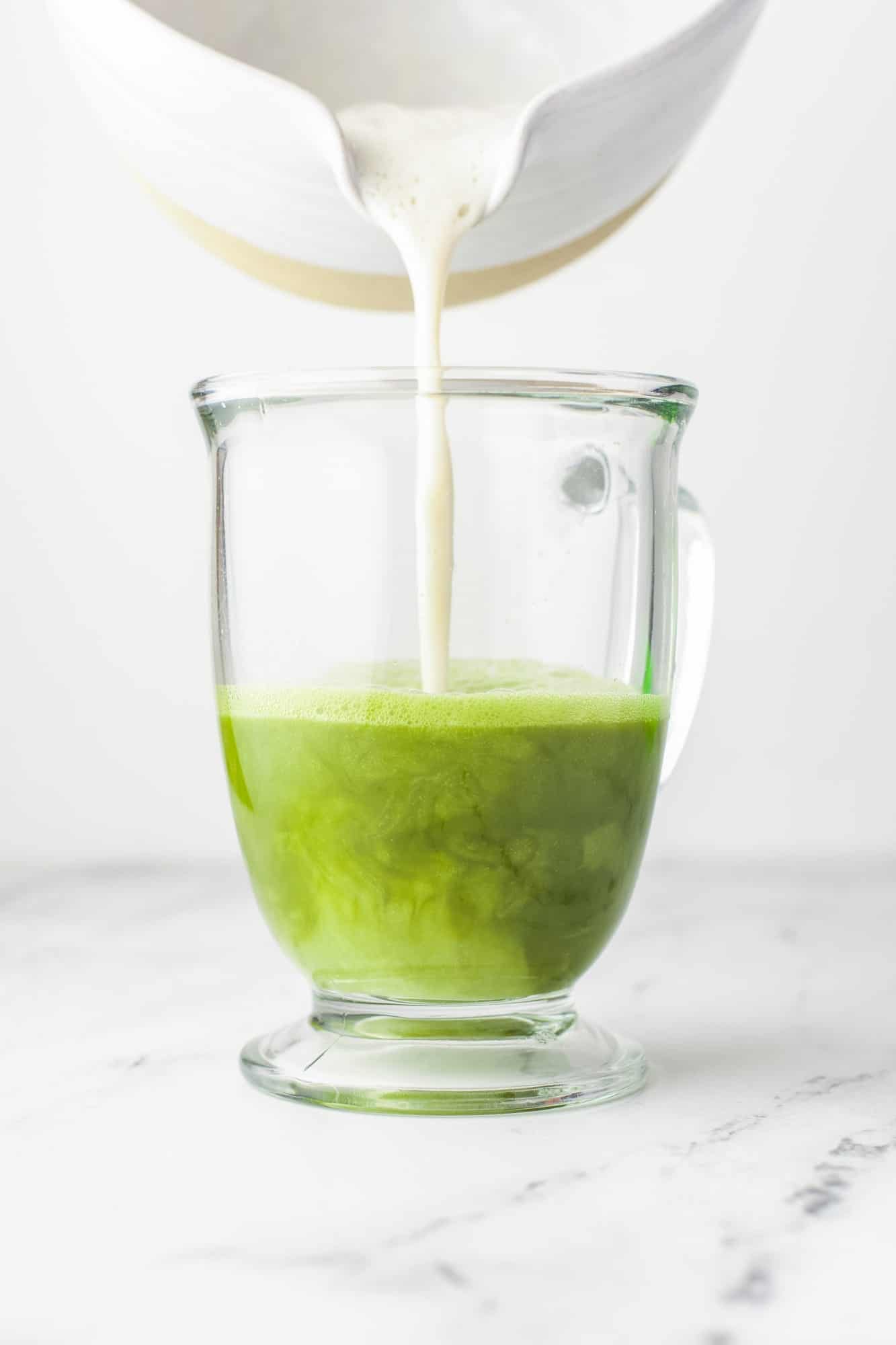
- Pour: Slowly pour the frothed milk over the matcha mixture in a mug, holding back the foam with a spoon. Once the milk is poured, gently spoon the foam on top of the latte.
- Optional garnish: You can finish your matcha latte with a light dusting of matcha powder, a sprinkle of cinnamon, or a drizzle of honey, if desired.
Recipe Tips
- Use High-Quality Matcha: This will make a big difference in how your matcha latte will taste. Always go for ceremonial matcha, but if you have premium matcha and you want to use it, that should also work.
- Don’t Use Very Hot Water: When you make the matcha paste, the hot water must be at the correct temperature (160-175°F or 70-80°C). If it’s too hot, the matcha can turn bitter.
- Froth the Milk: For a smooth velvety texture, always froth the milk before adding it to your latte.
- Experiment with Ratios: I like to use 1 teaspoon of matcha powder and 1 cup of milk for my latte, but if you like a stronger matcha taste, feel free to add another teaspoon of matcha powder.
- Serve immediately: Matcha lattes taste best when served fresh and hot. Enjoy your latte immediately after preparing it!
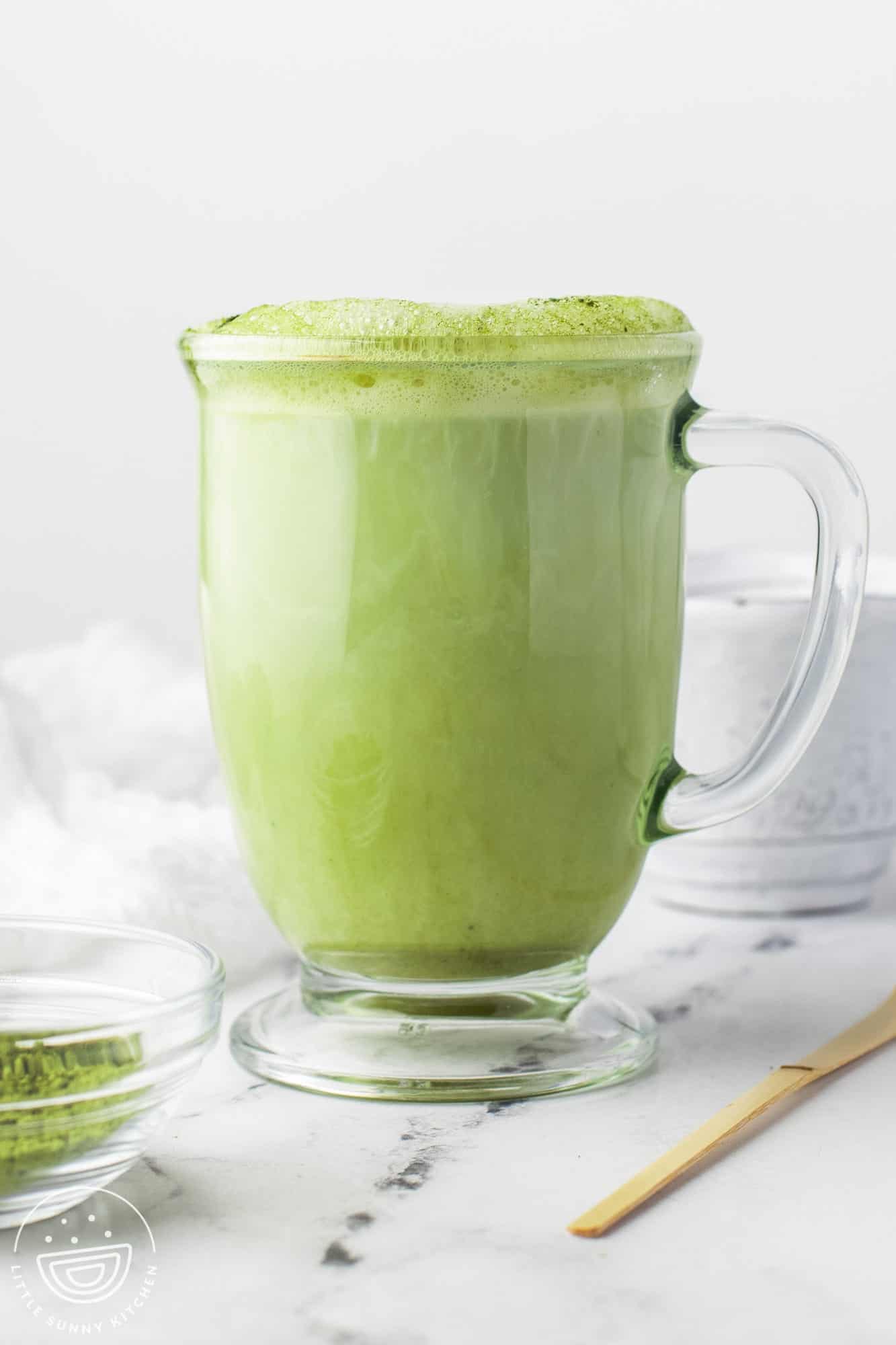
I hope that you found this post useful and learned more about matcha and how to make the perfect matcha latte! If you have any questions at all about matcha, please leave a comment and I’ll do my best to answer as soon as possible.
Did you make this? Be sure to leave a review below and tag me on Facebook, Instagram, or Pinterest!
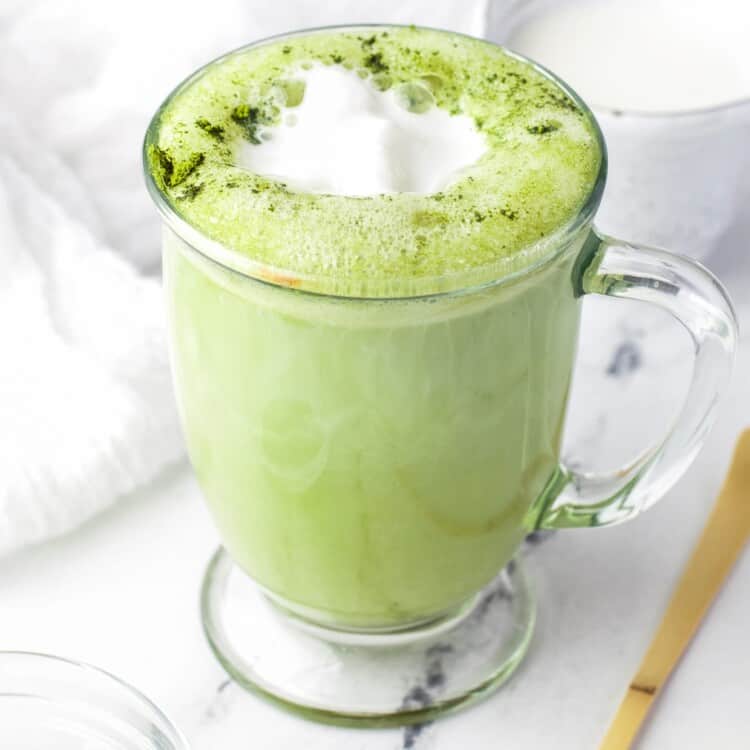
Matcha Latte
Equipment
- Small bowl
- Matcha whisk
- Milk frother
- Cup
Ingredients
- 1-2 teaspoons matcha green tea powder amount depends on the desired taste
- 3 tablespoons (45 ml) hot water
- 1 cup (240 ml) milk or milk alternative, I prefer oat milk
- ½ teaspoon pure vanilla extract optional
- 1 teaspoon honey optional
Instructions
- Start by sifting 1-2 teaspoons of matcha powder into a large mug or a spouted bowl using a fine mesh strainer to ensure a lump-free consistency.
- Pour 2-3 tablespoons of hot water (160-175°F or 70-80°C) over the sifted matcha. Using a matcha bamboo whisk (chasen) or a small regular whisk, mix the matcha and hot water in a gentle circular motion until a smooth, thick paste forms, ensuring that no lumps remain.
- Once the paste is smooth, whisk the matcha vigorously in an up-and-down motion for about 30 seconds, or until the mixture becomes frothy and the matcha is fully dissolved.
- To the frothy matcha mixture, add a dash of vanilla extract (optional) and your choice of sweetener if using. Stir gently to combine.
- Heat the milk in a saucepan over low heat or in a microwave-safe container until it reaches your desired temperature. Be careful not to let the milk boil. Use a milk frother, a french press, or a small whisk to froth the milk until it has a creamy, foamy texture.
- Slowly pour the frothed milk over the matcha mixture in a mug, holding back the foam with a spoon. Once the milk is poured, gently spoon the foam on top of the latte.
- You can finish your matcha latte with a light dusting of matcha powder, a sprinkle of cinnamon, or a drizzle of honey, if desired. Serve immediately.
Notes:
- Use High-Quality Matcha: This will make a big difference in how your matcha latte will taste. Always go for ceremonial matcha, but if you have premium matcha and you want to use it, that should also work.
- Don’t Use Very Hot Water: When you make the matcha paste, the hot water must be at the correct temperature (160-175°F or 70-80°C). If it’s too hot, the matcha can turn bitter.
- Froth the Milk: For a smooth velvety texture, always froth the milk before adding it to your latte.
- Experiment with Ratios: I like to use 1 teaspoon of matcha powder and 1 cup of milk for my latte, but if you like a stronger matcha taste, feel free to add another teaspoon of matcha powder.
- Serve immediately: Matcha lattes taste best when served fresh and hot. Enjoy your latte immediately after preparing it!
Nutrition Information
This website provides approximate nutrition information for convenience and as a courtesy only. Nutrition data is gathered primarily from the USDA Food Composition Database, whenever available, or otherwise other online calculators.
© Little Sunny Kitchen
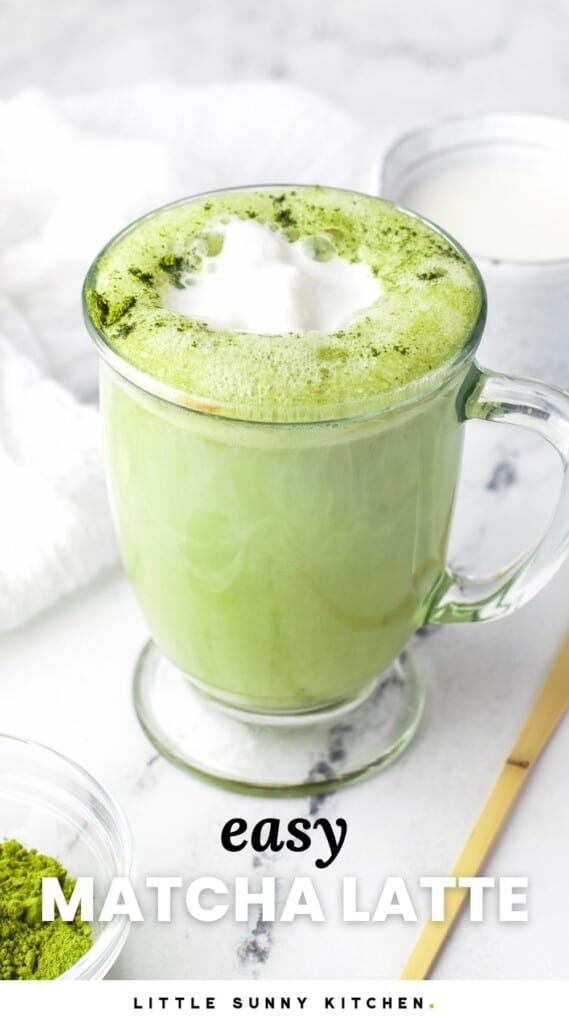
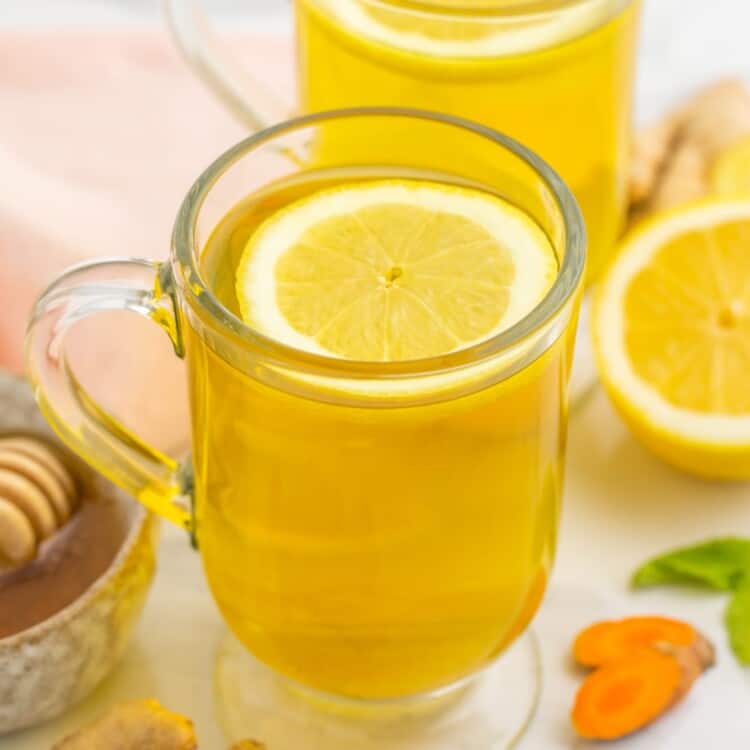
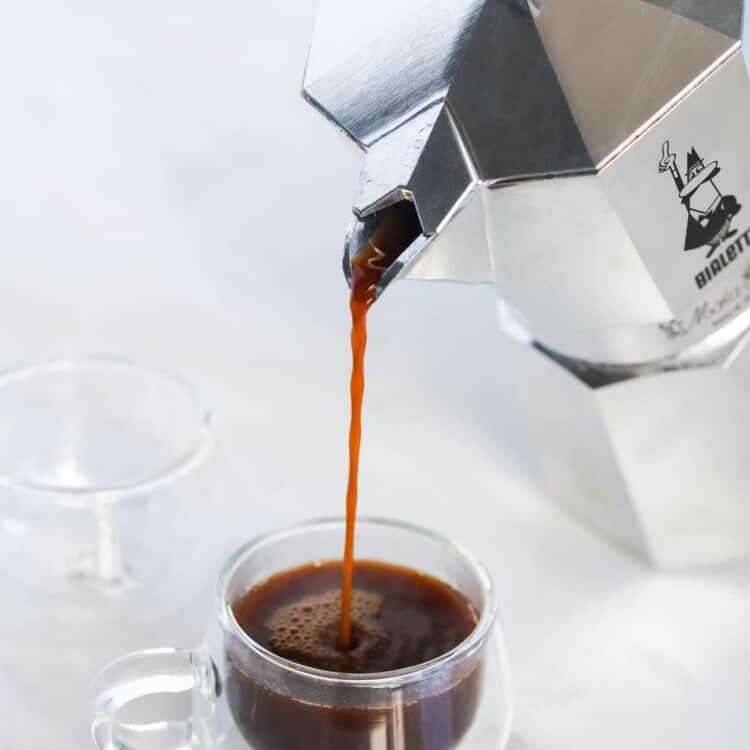
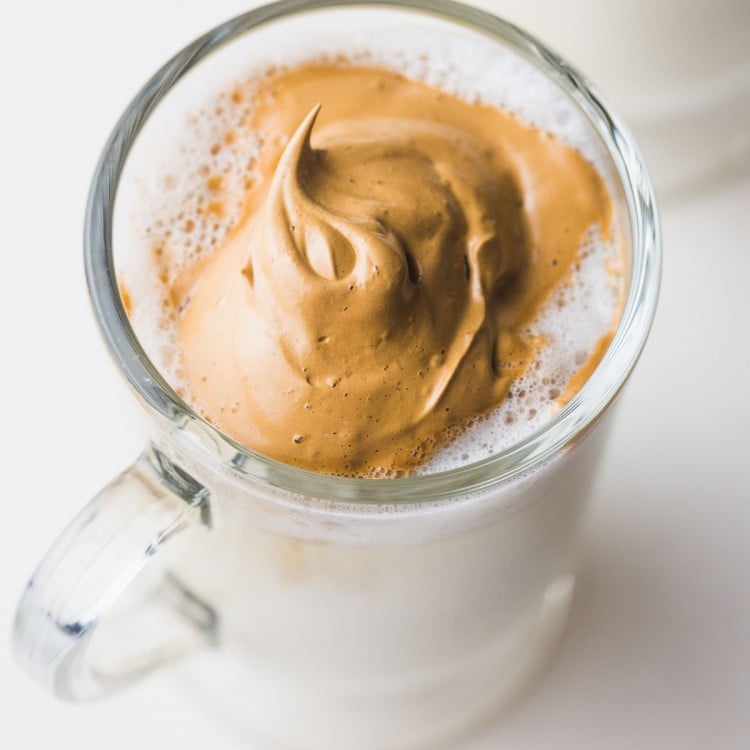
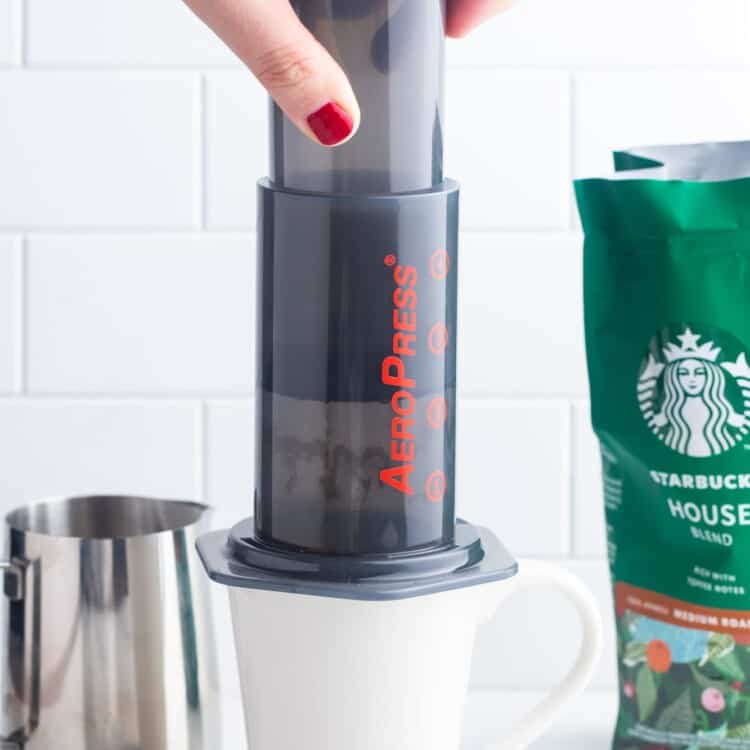
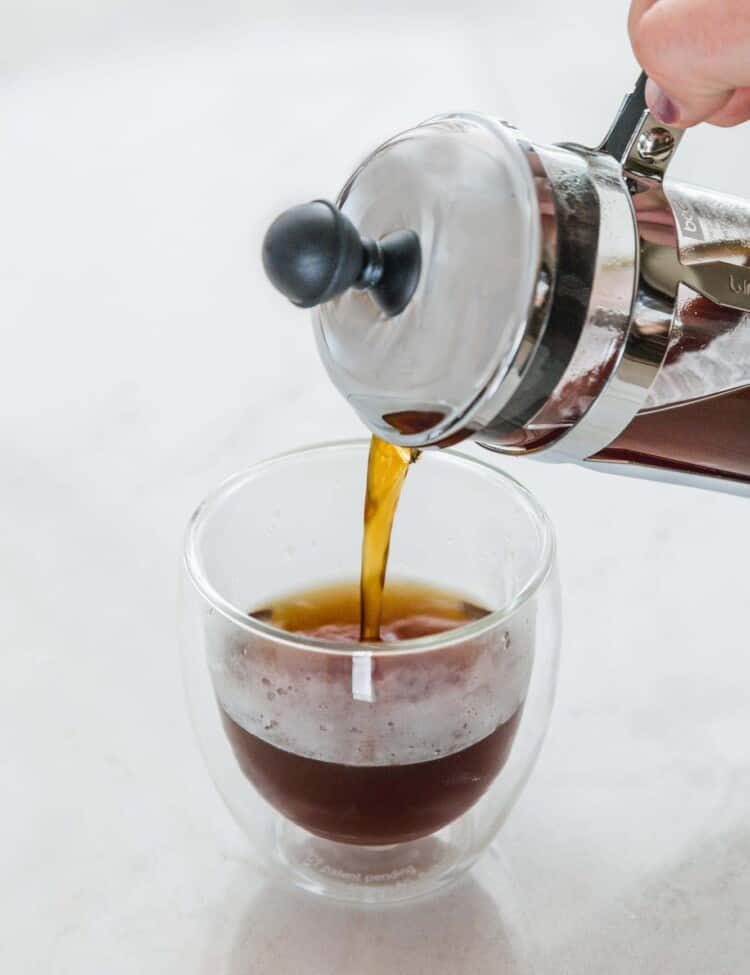
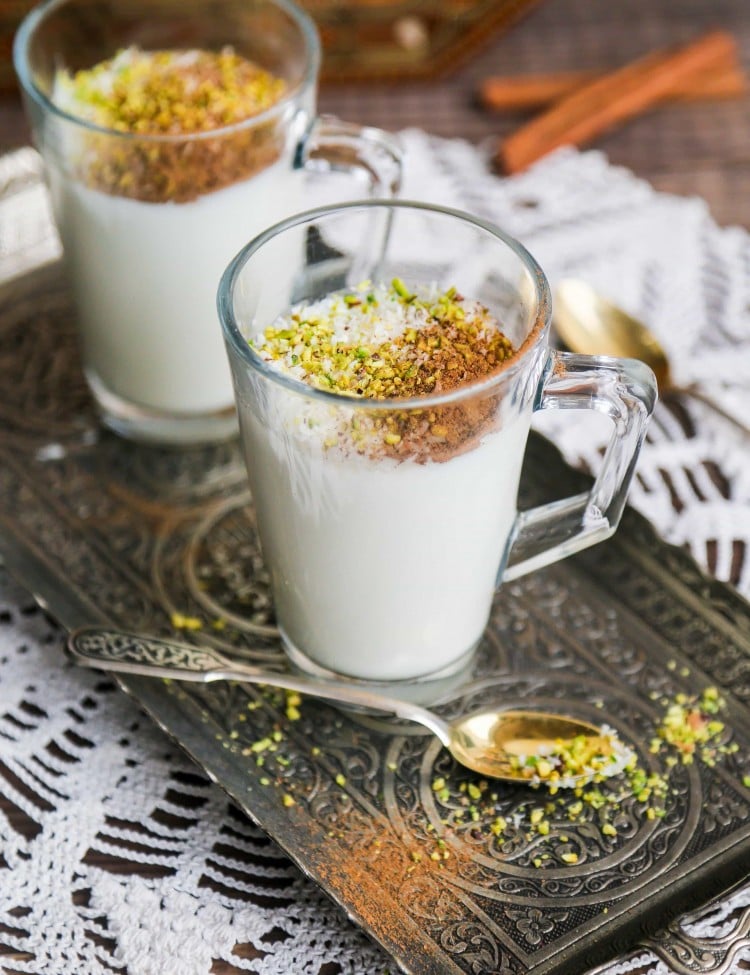
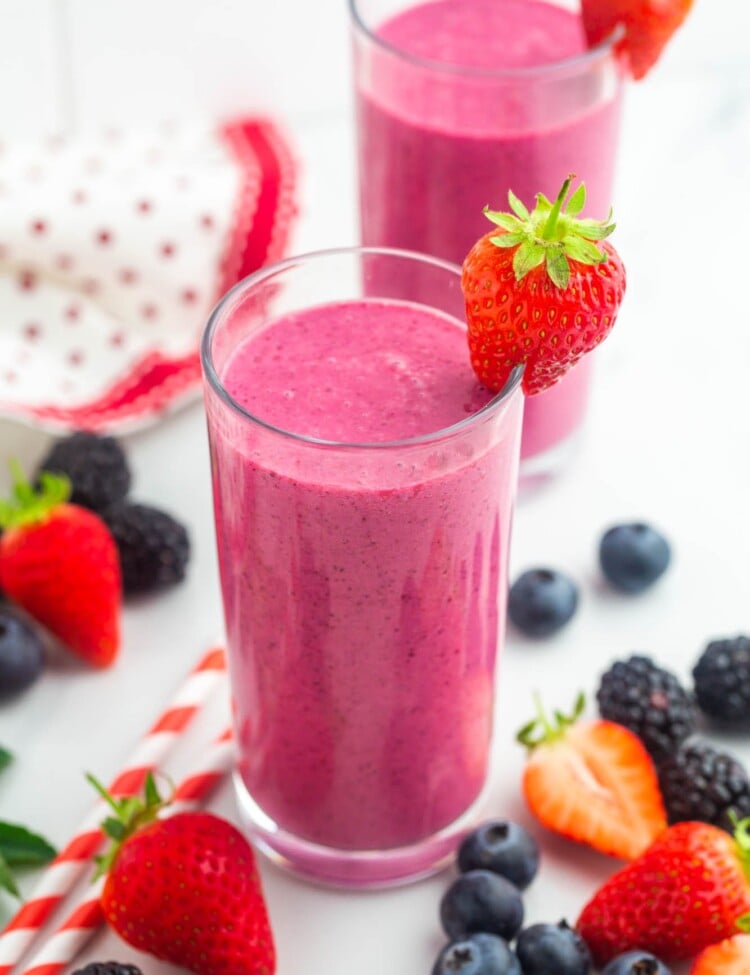
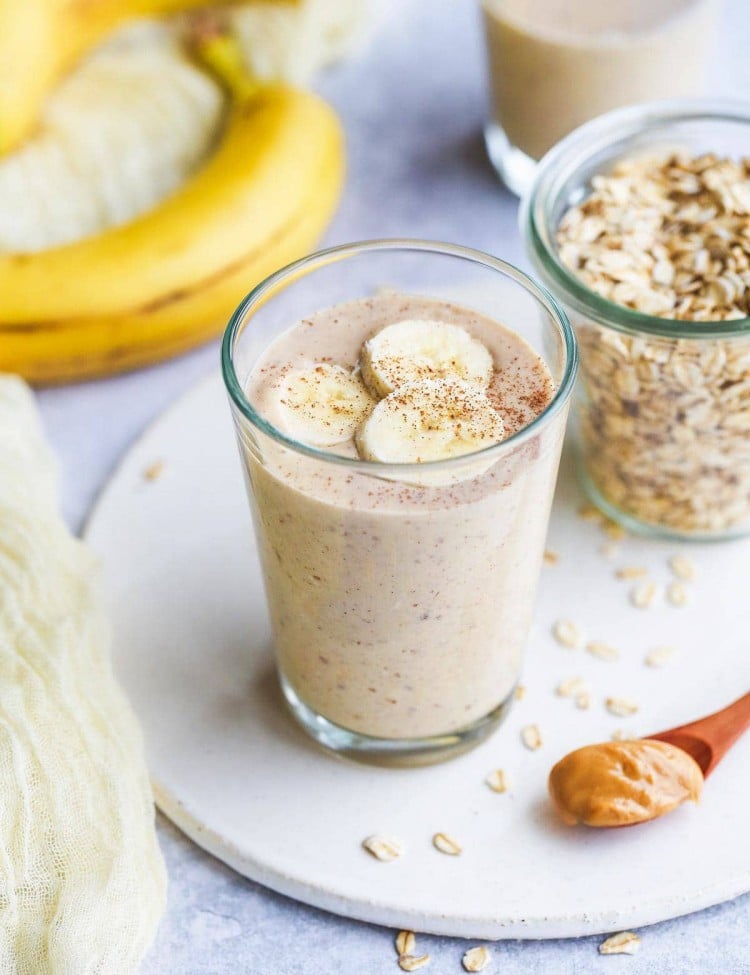
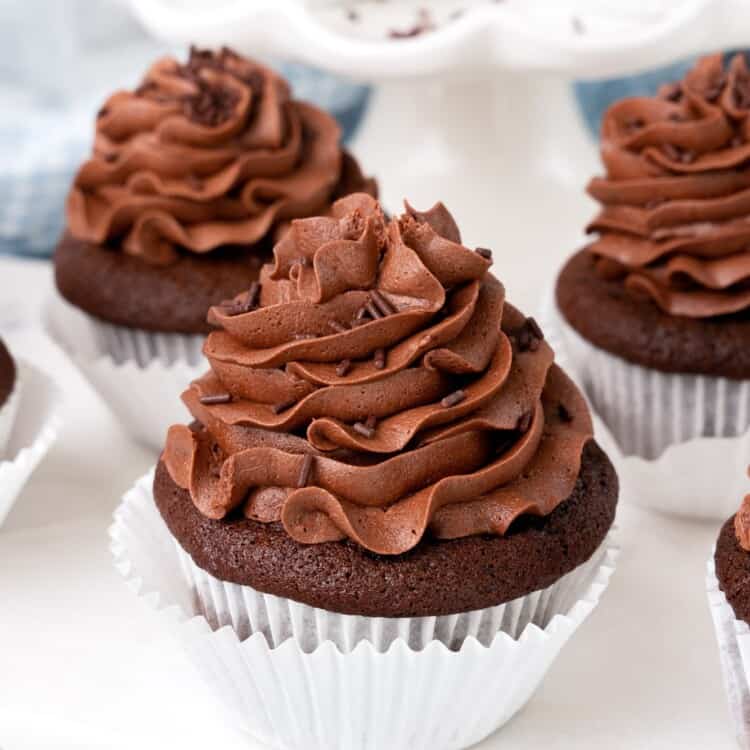
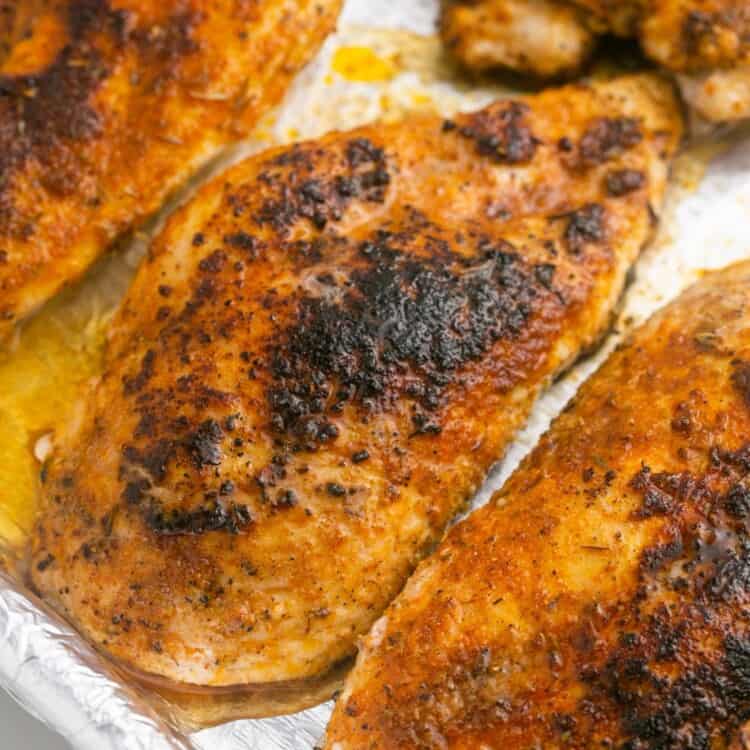
Melissa Williams says
I didn’t realize these were so easy to make at home!
Little Sunny Kitchen says
Thank you, Melissa! I’m glad you found this recipe!
Sharina says
This is so simple and easy to make! My friends love to have it every time they visit us. Such a tasty and satisfying cup for everybody!
Little Sunny Kitchen says
That’s so great to hear, Sharina! Thank you for taking the time to write this review!
Dana G says
My absolute favorite! I will never buy from Starbucks again!
Little Sunny Kitchen says
Thank you, Dana! I’m so glad you loved this homemade version!